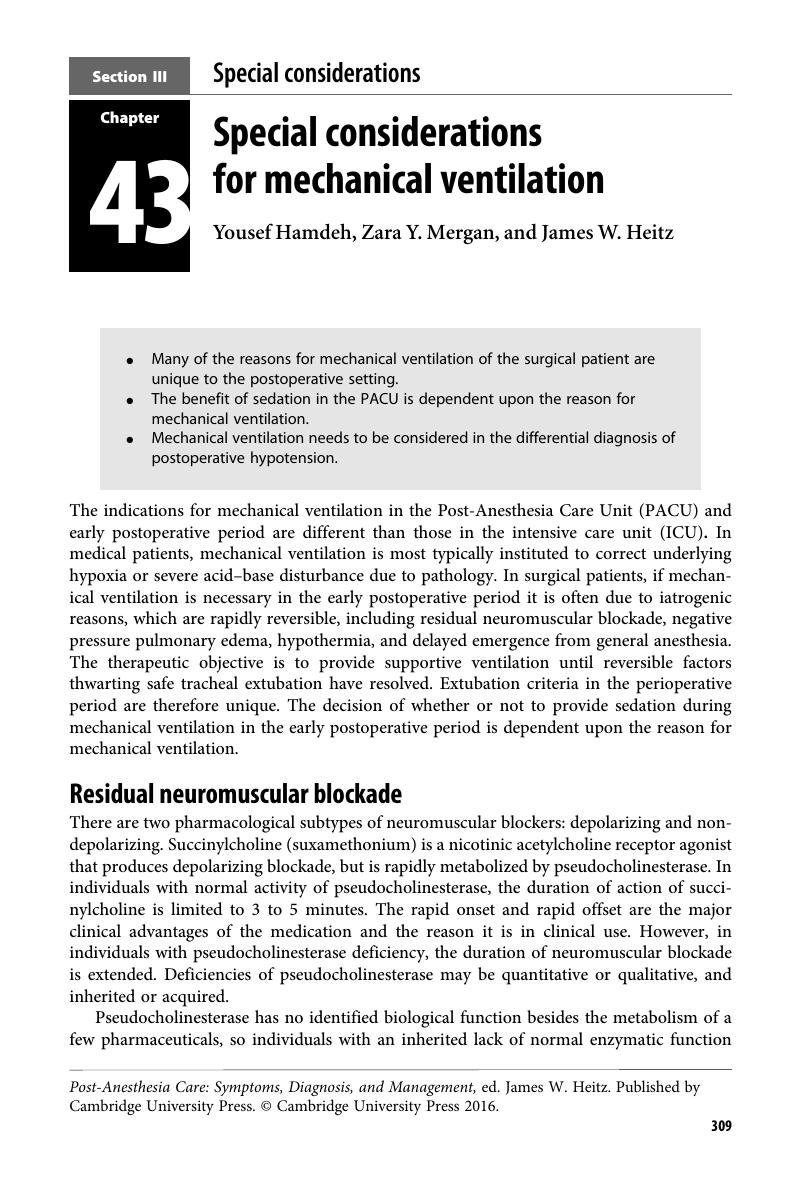Book contents
- Post-Anesthesia Care
- Post-Anesthesia Care
- Copyright page
- Dedication
- Contents
- Contributors
- Preface
- Acknowledgements
- Section I Introduction
- Section II Signs and symptoms
- Section III Special considerations
- Chapter 43 Special considerations for mechanical ventilation
- Chapter 44 Special considerations for the pediatric patient
- Chapter 45 Special considerations for the pregnant patient after non-obstetric surgery
- Chapter 46 Special considerations for the cardiac patient with implanted devices
- Chapter 47 Special considerations for the morbidly obese patient
- Chapter 48 Special considerations for the renal failure patient
- Chapter 49 Special considerations for pain management
- Chapter 50 PACU emergencies
- Index
- References
Chapter 43 - Special considerations for mechanical ventilation
from Section III - Special considerations
Published online by Cambridge University Press: 05 August 2016
- Post-Anesthesia Care
- Post-Anesthesia Care
- Copyright page
- Dedication
- Contents
- Contributors
- Preface
- Acknowledgements
- Section I Introduction
- Section II Signs and symptoms
- Section III Special considerations
- Chapter 43 Special considerations for mechanical ventilation
- Chapter 44 Special considerations for the pediatric patient
- Chapter 45 Special considerations for the pregnant patient after non-obstetric surgery
- Chapter 46 Special considerations for the cardiac patient with implanted devices
- Chapter 47 Special considerations for the morbidly obese patient
- Chapter 48 Special considerations for the renal failure patient
- Chapter 49 Special considerations for pain management
- Chapter 50 PACU emergencies
- Index
- References
Summary

- Type
- Chapter
- Information
- Post-Anesthesia CareSymptoms, Diagnosis and Management, pp. 309 - 315Publisher: Cambridge University PressPrint publication year: 2016



